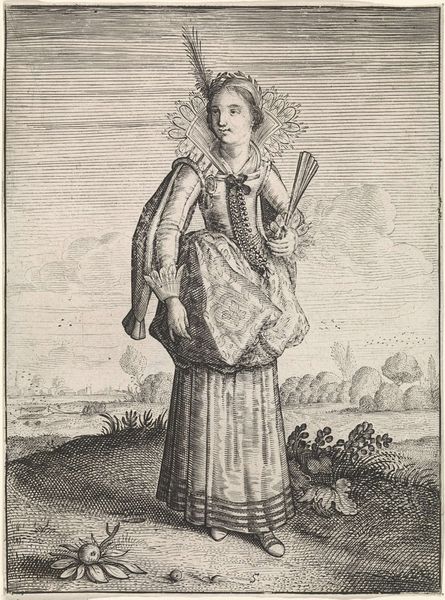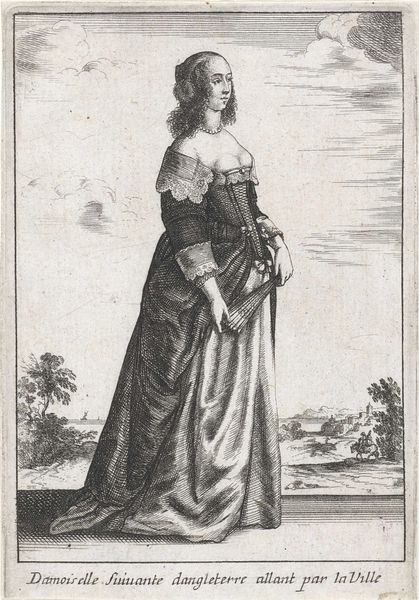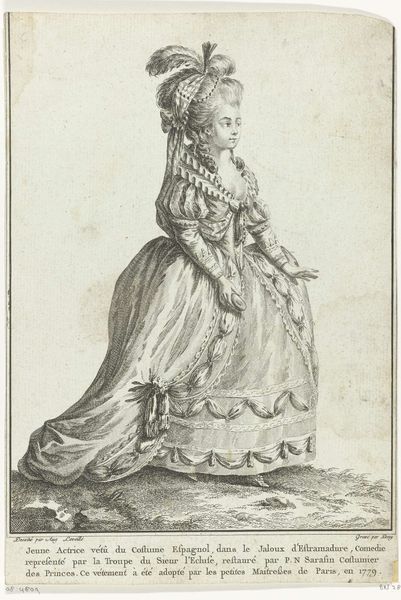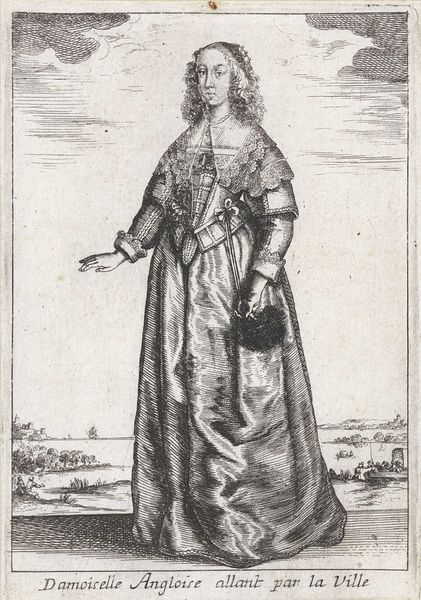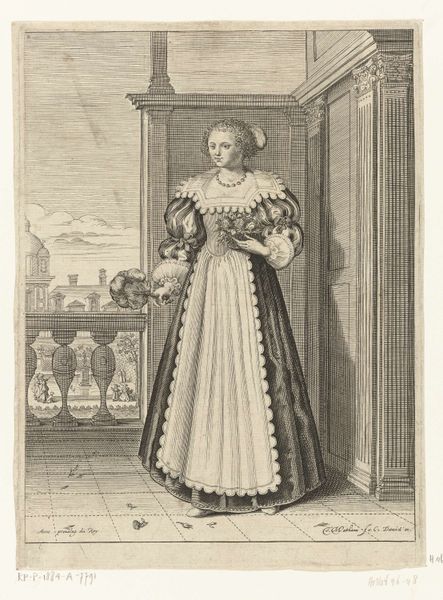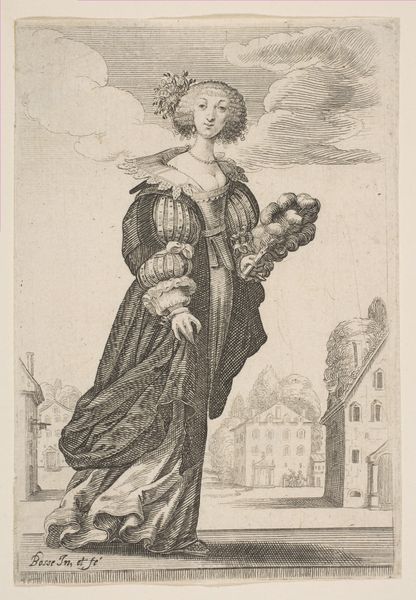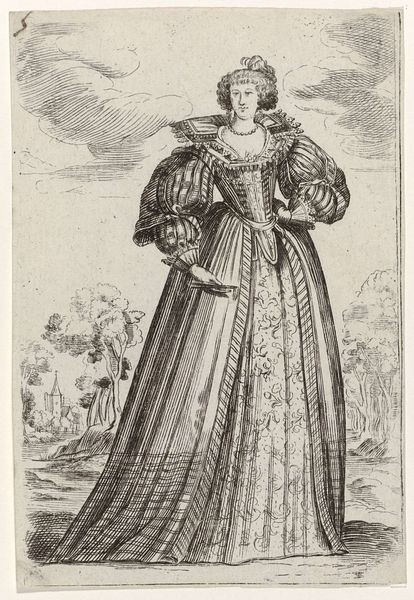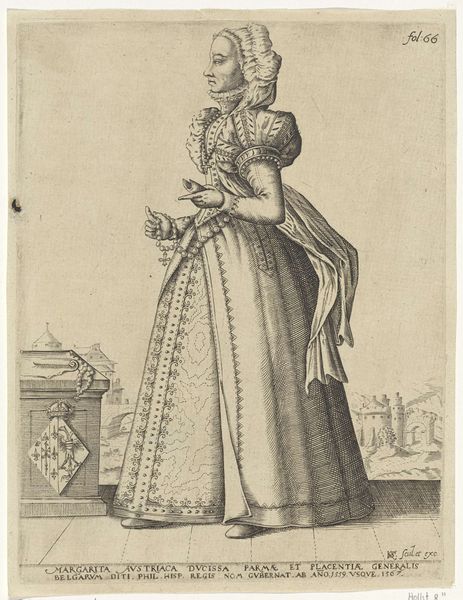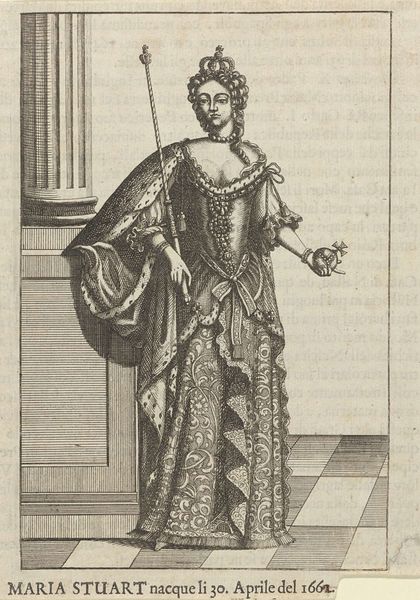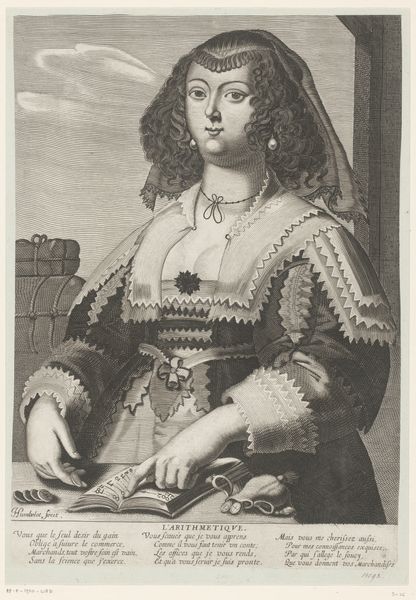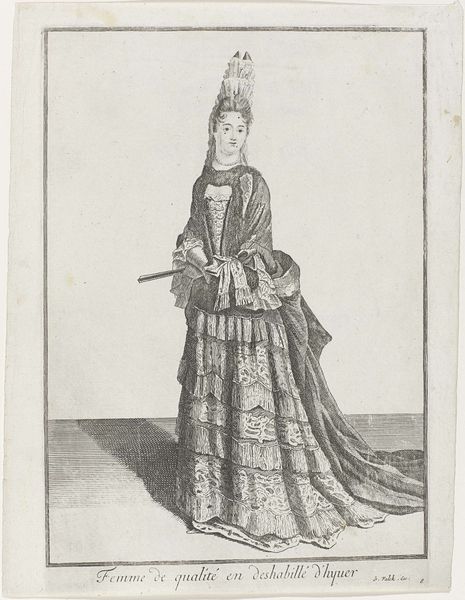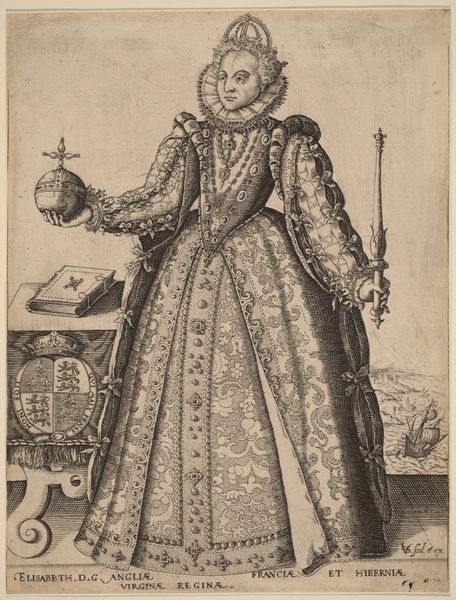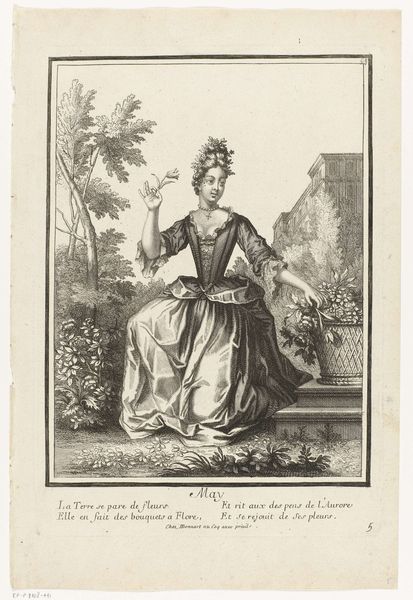
engraving
#
portrait
#
allegory
#
baroque
#
vanitas
#
engraving
Dimensions: height 180 mm, width 160 mm
Copyright: Rijks Museum: Open Domain
Editor: This engraving, titled "IJdelheid," meaning "Vanity," made around 1585-1615 by Gillis van Breen and held at the Rijksmuseum, presents such an interesting composition! It is a portrait, allegorical in nature, and immediately puts forth such a bleak sentiment, at least to me. What strikes you about it? Curator: For me, the engraving’s materiality immediately connects it to the socio-economic realities of its time. Consider the labor involved: the engraver, the paper maker, even the societal structures that fostered the market for such images. The "Vanitas" theme reminds us of consumption culture then and now, asking us who owned this image, where would they keep it, how did they regard such luxurious goods at that time, what kind of dyes or ink were employed? Editor: So, beyond just seeing it as a depiction of mortality, you see it reflecting a broader system of production and value? Curator: Exactly. It isn't just a symbolic representation of death. The skull peeking from beneath the fine robe, and other visual tropes speak to the value placed on earthly things that we find in material possessions or achievements. It’s a commentary on the structures of power and privilege, reproduced and disseminated through the very act of creating and owning the print. Even the artistic choices like composition or baroque details speak to certain aesthetic value systems as material conditions. The act of engraving is laborious, but what other labor made this possible? Editor: That makes me reconsider my first impressions. It's not just about the end of life, but also the system of things during life... It almost transforms the artist into a sort of "cultural producer", doesn't it? I'll have to think about these older works from now on in a more material fashion, because it does unveil a lot of labor history involved in making luxury arts for particular demographics. Curator: Precisely! Examining its means of production transforms our reading from mere morality tale to social commentary.
Comments
No comments
Be the first to comment and join the conversation on the ultimate creative platform.
